Introduction
The economy of the United Arab Emirates (UAE) is considered one of the world’s strongest. As Khan (2014) pointed out, “The World Economic Forum’s annual Global Competitiveness Index now places the UAE as the top-performing economy in the Arab world and 12th place overall in the international standings” (p. 43). In its turn, this presupposes the possession of a great buying power, on the part of the UAE-based consumers – hence, deeming the country’s retailing market particularly attractive for new entrants. In my paper, I will explore the validity of this suggestion, regarding the three segments of the Emirati retailing industry, concerned with the selling of food/clothes and with serving meals at a restaurant. Specifically, I will analyze the qualitative features of the Lulu hypermarket (food) in Abu Dhabi, Zara store (clothes) at the Dubai Mall, and Social House restaurant at the same location in Dubai.
Retail Stores
Lulu (hypermarket)
As it was implied in the Introduction, the LuLu Group International primarily specializes in retailing packaged-food items, even though the scope of the company’s activities continues to become ever more diversified. As of today, just about every Lulu supermarket/hypermarket carries a vast number of non-food items, as well. To illustrate the validity of this statement, we can refer to the company’s hypermarket in Abu Dhabi. The hypermarket’s size is estimated to account for 30,000 square feet – this includes the square footage of the featured food outlets, coffee shops, and Lulu-branded department stores.
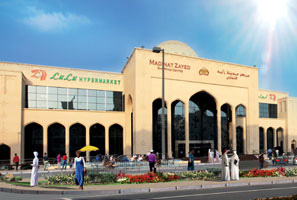
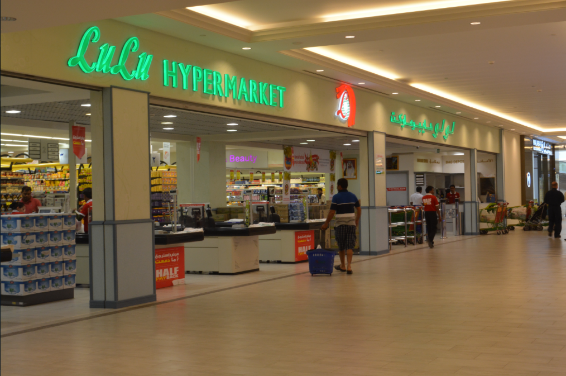
Among the main categories of food products, sold at the hypermarket, can be named: frozen foods, meat products, processed and packaged foods, poultry products, dairy products, fresh vegetables/fruits, and non-alcoholic beverages. The store’s most prominently featured categories of non-food products include perfumes, watches, toys, cosmetics stationery, and electronics. Along with retailing the mentioned categories of tangible products, Lulu hypermarket offers consumers to receive several supplementary services, such as qualifying them to apply for different gift vouchers and loyalty cards, which is supposed to add more value to one’s shopping experience at the store (New LuLu, 2011).
As can be seen in one of the photos above, the hypermarket’s external design features some identifiable Arabic motifs. At the same time, however, the store’s interior design is best described as thoroughly modernist. Designers have made a deliberate point in ensuring that it resembles the design of just about any hypermarket in Europe or North America. Partially, this can be explained by the specifics of the demographic situation in the UAE – a good half of the country’s permanent and semi-permanent residents consists of people of non-Arabic background.
It can be confirmed with a high degree of certainty that Lulu’s managers had kept this consideration in mind, while designing the store’s audience-targeting strategies, as well. After all, it does not represent much of a secret that many non-citizen residents in the UAE happen to be price-sensitive. Therefore, it does make much sense that the store’s approach to targeting consumers is concerned with exploiting people’s strive to find good bargains. The fact that this is indeed being the case can be shown, concerning the store’s deployment of the loss leader marketing strategy. As can be seen in the photo below, the hypermarket’s interior layout features some crates filled with low-priced products (such as knives). In its turn, this is meant to draw the attention of price-sensitive customers, which can be assumed to account for a considerable share of the targeted audience.

Given the fact that Lulu continues to generate ever-larger profits, it will be logical to suggest that the chosen marketing strategy, on its part, is indeed fully appropriate.
What I like the best about the Lulu hypermarket is that it does both: offer competitive prices for the lines of its products and provide a great variety of merchandise to choose from. Therefore, there is nothing too surprising about the fact that the company’s customer base continued to expand steadily throughout the recent decade. Another thing that contributes towards sharpening Lulu’s competitive edge has to do with the company’s willingness to take advantage of the multi-channel selling strategy. That is, along with retailing its merchandise within the conventional ‘brick and mortar’ format, Lulu applies much effort into expanding the range of its online services.
For example, as of today, people can shop at the Lulu hypermarket while they are on the move – a specially designed Android-based application, which can be installed in one’s smartphone free of charge, makes it possible. Among the company’s strengths that appeal to me personally can also be mentioned in its commitment to the concept of ‘ethical retailing’. While purchasing a particular food or non-food item at Lulu, I can be sure that it was produced and delivered to the store in full accordance with the provisions of the company’s code of corporate social responsibility.
In the future, I would like to see the assortment of Lulu’s foods being expanded to include those that appeal to people from Eastern Europe, such as sour-pickled herrings, for example. After all, there are more and more tourists come to the UAE from this particular part of the world. However, it is not very uncommon among them to complain about the assortment of ‘ethnic European’ foods at Lulu being rather limited.
Zara (store)
Zara is a Spanish-based retailer of clothing/accessories (part of the Inditex group), which was able to gain global fame, due to its truly innovative retailing strategy. Unlike what it is being the case with other clothing retailers, it only takes two weeks for a particular Zara-branded product to become available for purchase after it is being sketched for the first time by a designer. This allows Zara to react promptly to the demand-fluctuations in the global market of fashion, which works to increase the extent of Zara’s competitiveness. As a result, Zara is in a position to pursue the policy of aggressive international expansion.
As of today, the number of Zara outlets in the UAE amounts to six. The largest of them is located at the Dubai Mall, with its size accounting for 1500 square meters. The store’s inventory consists of different lines of ‘fashionably casual’ clothing for men, women, and children, with the most popular items accounting for jackets, blazers, suits, shirts, trousers, skirts, shirts, and sweaters. Zara’s inventory is restocked on a biweekly basis, which guarantees that the company’s products are fully consistent with the latest trends in fashion (Zara Dubai Mall, 2016).
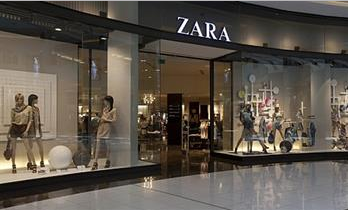
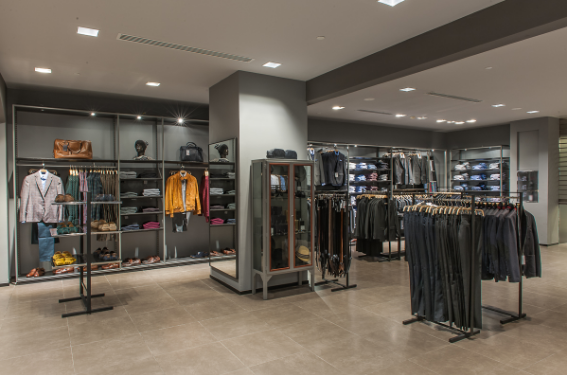
Even though Zara proclaims that its products appeal to just about every category of consumers, it is still possible to define the primarily targeted audience – young urban professionals (‘yuppies’) of both sexes. The logic behind this suggestion has to do with some different considerations. For example, the company’s store in Dubai deploys the so-called ‘clicks-and-bricks’ marketing strategy which allows customers to be constantly updated, as to the newly arrived inventory, without having to visit the actual store. This, of course, presupposes a certain degree of urban sophistication, on the targeted audience’s part. We can also assume that the store aims to target specifically those Emirati men and women who prefer to lead a secular lifestyle. The reason for this is that most of the store’s inventory appears to adhere to the provisions of Western fashion.
The store’s internal and external design also does not seem to feature any uniquely Arabic motifs. As can be seen in the photos above, the store’s layout adheres to the representational format of a boutique. Upon having walked into the store, customers are greeted by the friendly staff and advised on what stocked products may interest them the most. The store’s sales representatives consist of ethnically diverse individuals who are equally fluent in English and Arabic.
Zara store at the Dubai Mall deploys several promotion strategies. Probably the most notable of them is concerned with providing substantial discounts to buyers. Some of the store’s clothing items feature a price that is being reduced by as much as 70%. Zara also experiments with the unconventional methods for advertising its products. One of them is concerned with creating the artificial scarcity of fashionable and yet affordable clothes, available for purchase at the store. As a result, loyal customers experience a strong motivation to visit the store as often, as possible. Another one has to do with the store’s successful deployment of the word-of-mouth model of marketing, “(Word-of-mouth is) sharing of information from one person to another person or groups though human communication such as face-to-face contact, telephone, correspondence (letters, e-mail, text messaging) or social media” (Gombeski et al., 2011, p. 22). In its turn, this allows Zara to reduce operational costs and to contribute to the rapid growth of its customer base.
Overall, I do like the described Zara store very much. The main reason for this is concerned with the clearly defined innovative nature of this store’s functioning, which sets it apart from other clothing retailers in the UAE. For example, unlike what it is being the case with its competitors, Zara does not try to anticipate what may be the demands of the targeted market in the future. Instead, the store reacts to them, as they come into being. What this means is that just about any clothing item bought at the store will prove trendy and fashionable. Another thing that causes me to appreciate being able to shop at Zara is that there is high quality to the bent lines of clothing. The reason for this is that being a vertically integrated company, Zara can afford to have its products manufactured in Europe (instead of China). It also appeals to me that Zara pays close attention to the fashion-related anxieties in consumers – hence, the store’s long-established presence on Facebook and Twitter.
In the future, Zara should consider adjusting the lines of its products to be more consistent with the aesthetic dispositions of Emirati consumers. For example, the store’s brand-name clothes could use being more colorful than they currently tend to be.
Social House (restaurant)
The Social House restaurant is located at the Dubai Mall. It specializes in serving the world’s most popular dishes, associated with the Mediterranean, Malaysian, Korean, Japanese, American, and Thai cuisines. Because of it, the Social House enjoys the reputation of being a truly cosmopolitan place for dining out: “Social House hosts a cosmopolitan blend of flavors to please any discerning palate. Our menu spans the globe and delivers a touch of everything from everywhere” (Social House, 2016, para. 1). There are close to 200 different food items on the restaurant’s menu, with the most commonly ordered ones accounting for pizzas, pasta, sushi rolls, and American-styled steaks. The restaurant’s size is 12000 square meters, which provides enough space for 300 sitting places. The external and internal design of the Social House features some Oriental decorative elements, such as pots with miniature trees and chairs made out of bamboo stems.

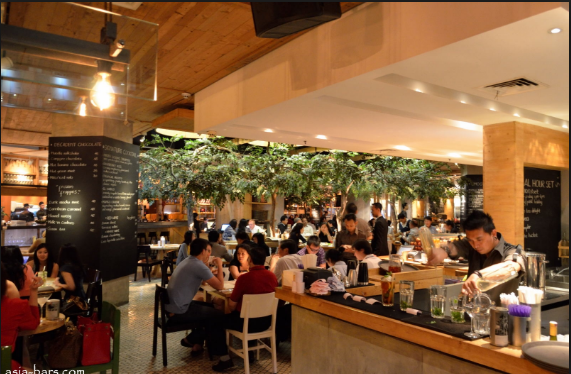
Because of the specifics of the restaurant’s menu and the fact that Social House is considered somewhat pricey, it will be logical to conclude that its targeted audience consists of the ethnically diverse/well-off individuals, who want to be provided with the opportunity to socialize with others while dining out. This explains the restaurant’s positioning as the place where ‘East meets West’. Social House is expected to serve the function of helping people from different countries to find comfort in the company of each other. This is also the reason why the restaurant’s menus can be ordered in just about every major language.
One of the restaurant’s promotional activities is concerned with providing price discounts to those customers who come to Social House in the companies of no fewer than six. Along with aiming to attract more visitors, this particular activity also serves the purpose of strengthening Social House’s reputation as a prestigious ‘hangout joint’. Yet another promotion strategy, deployed by the restaurant, is popularizing its menu and services via social media, such as Facebook. While joining the community, people can stay updated as to the changes in the restaurant’s menu. They can also provide suggestions, as to what can be done to make one’s dining experience at Social House even more enjoyable. It is understood, of course, that this contributes rather substantially towards helping the restaurant to enjoy much popularity with the targeted audience.
Social House provides a few supplementary services, as well. For example, customers can order the takeout-delivery of just about every item on the menu. The restaurant also does food catering.
I do like Social House rather intensely. The foremost reason for this is that the food items it serves are extremely tasty and they come in large portions. What also adds to the high quality of one’s dining experience at Social House is that the restaurant’s waiters seem to be genuinely interested in trying to prove the most helpful to the visitors. This causes the latter to feel being appreciated, as individuals – hence, encouraging them to consider visiting the restaurant continually. I also enjoy the relaxed atmosphere inside. It does prompt visitors to be wanting to spend more time at the restaurant, as the place that does not only offer a vast variety of tasty meals, but also many opportunities for socialization.
At the same time, however, there are a few things about Social House that could be improved. For example, the restaurant’s managers should consider hiring more staff in the kitchen so that the serving time could be shortened. It is assumed that most people who come to eat at Social House are in no rush. However, this assumption cannot be deemed fully applicable to all the guests. Moreover, the restaurant’s current menu could be expanded, as well. After all, even though there is indeed much variety to the food choices that it offers, this menu does not quite reflect the sheer cultural diversity of the affiliated clientele. It should prove beneficial to the restaurant’s competitive well-being if the menu begins to include more national dishes from around the world.
Concerning Social House, the future retailing practice should be concerned with adding more ‘perceived value’ to the served food items and provided supplementary services. This can be done by the mean of improving the restaurant’s corporate reputation. There are several ways, as to how this could be achieved. The main guiding principle, in this regard, is to invest in ensuring that the process in question never ceases to be highly interactive.
Conclusion
The earlier provided descriptions of the three UAE-based retailers allow us to come up with the following insights, into what represent the most vital preconditions for a particular retail business to prove successful:
a. Managers must take into consideration the psychological predispositions of the targeted audience. The validity of this suggestion can be illustrated, regarding the Lulu hypermarket’s effective utilization of the loss leader marketing strategy. The deployment of this strategy will prove most suitable when targeting the market with a considerable share of price-sensitive consumers is concerned. It will only be logical to expect that the number of such consumers in the UAE will increase, due to the continual influx of foreign job seekers.
b. There are ways to ensure the competitiveness of a particular retail enterprise, without having to implement the policy of outsourcing. The case of Zara exemplifies the soundness of this proposition. After all, as it was pointed out earlier, concerning the company’s store at the Dubai Mall, it is indeed possible for a clothing retailer to offer competitive prices, on one hand, and to guarantee a high quality of the stocked inventory, on the other. The key to success here is the vertical integration of retailing logistics within the company.
c. Retailers will benefit from resorting to innovative/unconventional promotion strategies. The full appropriateness of this suggestion is predetermined by the fact that the practical implementation of such strategies by a retailer will allow it to reduce the affiliated operational costs. There is, however, even more to it – such a practice is fully consistent with the well-observed tendency of today’s consumers to think of shopping in terms of social activity.
In light of what has been mentioned in the analytical part of this paper, it can be confirmed that the retailing realities in the UAE do correlate with those in the West. This can be seen as yet another indication of the Emirati economy’s vitality. It is indeed fully appropriate to refer to the UAE as one of the world’s most developed nations. I believe that this conclusion is thoroughly consistent with the paper’s initial thesis.
References
Gombeski, W., Britt, J., Wray, T., Taylor, J., Adkins, W., & Riggs, K. (2011). Spread the word. Marketing Health Services, 31(1), 22-25.
Khan, S. (2014). United arab emirates leading competitiveness. Defence Journal,18(2), 41-43.
New LuLu hypermarket opens in Abu Dhabi. (2011). Web.
Social House – the Dubai Mall. (2016). Web.
Zara Dubai Mall. (2016). Web.